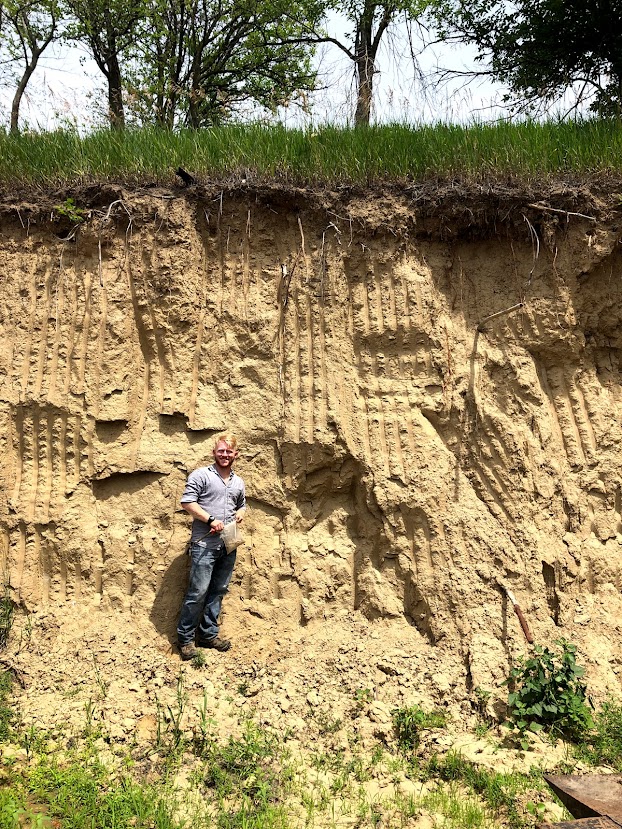What is the average soil color for this series?
1) Brown
2) More brown...
3) Even more brown!
4) Something NOT brown
Brown!
10YR to 7.5 YR
dark yellowish to dark greyish browns
Using your best guess, what would you say the current land use is? (Hint: I may or may not have grown up in the suburbs...)
1) High Density Cities
2) Low density Housing, schools, urban development
3) Tons and tons of industrial sites
urban and suburban development
This could be you!
What is the parent material of this series? (HINT: It is the most common parent material in Columbia)
1) Glacial till
2) Alluvium
3) Loess
Loess (windblown silt)

What is the soil order for this series?
1) Entisol (absence of horizons)
2) Aridisol (arid climates)
3) Gelisol (very cold climates, have permafrost)
Entisol
What is the soil pH for this series?
1) 1.4
2) 7.2
3) 13.7
7.2

The harvester series typically provides most of the plant essential nutrients, including Macro and Micronutrients.
The Macronutrients it provides are: Nitrogen, Phosphorous, Potassium, Calcium, Magnesium and ???.
The micronutrients it provides are: Iron, Manganese, Zinc, Copper, Boron and ???
What are the two elements I am missing?
1) Sulfur and Chlorine
2) Lithium and Molybdenum
3) Hydrogen and Mercury
Sulfur and Chlorine
If you had to judge this series very harshly, would you consider it to be an older soil series? Or is it giving more of a baby soil series? This can also be based on overall vibes.
its giving teen
Guess the average porosity and bulk density for this soil series. If your answers are within a 5 number range, you still get the point!
Hint 1: The porosity % is between the numbers 40 and 60
Hint 2: The bulk density is between the numbers 0.7 and 2.4
1) Between 45-55%, based on loess-derived silt loam textures
2) Around 1.5 g/cm3
This series has a total of 8 soil horizons, going from A - C - Bb. How many horizons are in each?
1) 5A, 1C, 2Bb
2) 2A, 5C, 1Bb
3) 1A, 5C, 2Bb
1 A horizon
5 C horizons (C1-C5)
2 Bb horizons (Bb1-Bb2)

If you were to move into the area, would you rather build your own cute little house OR would you rather build your own cute little farm with cute little cows? There is only one right answer....
Good for building a house:
- Well-drained on moderate slopes (2–9%), which is ideal for foundations.
- Common in urban/suburban developments, so often already zoned and engineered for construction.
Less ideal for farming:
- Compaction from development limits root growth and water infiltration.
- Disturbed horizons reduce natural fertility and soil structure.
So: Yes, to housing, maybe to small gardens, but no to serious farming unless the land is heavily amended and restored. Sorry baby cows :(
I will be giving you the 5 Soil Forming factors; or CLORPT, except plot twist.... You have to answer for CL! (Hint: The average climate of eastern Missouri)
Organisms: urban vegetation and human activity affect the soil development
Relief: Found on 2 to 9% slopes, allowing for good drainage but still influenced by runoff
Parent material: Formed in loess over residuum from limestone
Time: Moderately developed, recent urban development has slowed down development
1) Arid with low precipitation
2) Temperate with moderate precipitation
3) Humid with high precipitation
Climate: Temperate with moderate precipitation typical of eastern Missouri; influences weathering and leaching

Guess the average Field capacity and permanent wilting point. If your answers are within a 5 number range, you still get the point! (bonus points if you can guess the available water capacity)
Hint 1: The field capacity % is between the numbers 25 and 40
Hint 2: The permanent wilting point % is between the numbers 8 and 22
For the Harvester soil series, which is a silt loam derived from loess, typical water retention values are:
- Field Capacity: around 30–35% (by volume)
- Permanent Wilting Point: around 12–15% (by volume)